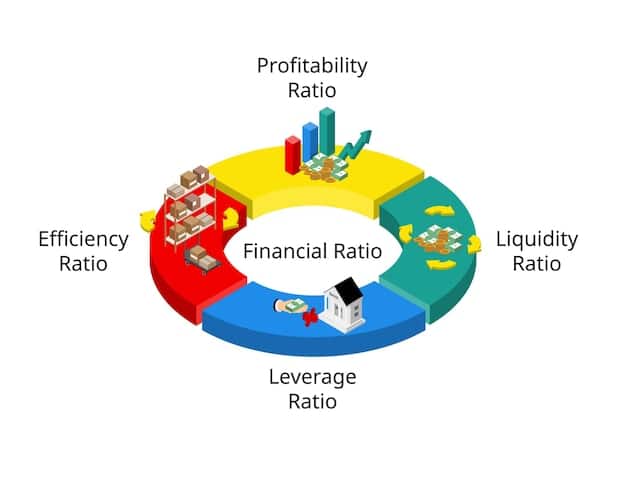Is Your Credit Score Ready for 2025? 5 Key Finance Checks

Proactively evaluating your financial standing, especially your credit score, before January 1st, 2025, is a crucial step towards ensuring fiscal stability and leveraging opportunities in the new year.
As 2025 rapidly approaches, taking control of your personal finances and ensuring a strong credit score becomes paramount for future opportunities. Understanding your current financial position and proactively addressing potential weaknesses can significantly impact your trajectory. This guide will walk you through crucial checks to perform before January 1st to ensure your financial health is robust and ready for the new year.
Understanding Your Credit Score: The Foundation of Financial Readiness
Your credit score is more than just a number; it’s a dynamic reflection of your financial reliability that influences everything from loan approvals to insurance premiums and even rental applications. As we edge closer to 2025, this numerical representation of your creditworthiness will continue to play a pivotal role in your financial life. A strong score can open doors to better interest rates, making major purchases like a home or car more affordable. Conversely, a low score can present significant hurdles, increasing the cost of borrowing or even denying access to essential financial products.
Many factors contribute to your credit score, including your payment history, the amount of debt you owe, the length of your credit history, new credit applications, and the types of credit you utilize. Each of these elements carries a different weight, with payment history typically being the most influential. Consistently paying bills on time, keeping credit utilization low, and maintaining a diverse credit mix are established strategies for building and maintaining a healthy score. Neglecting any of these areas can have a cascading negative effect.
The Impact of Credit Reporting: What You Need to Know
Credit reporting agencies, like Experian, Equifax, and TransUnion, collect and maintain your financial data. These agencies generate the credit reports that lenders use to assess your risk. It’s not uncommon for these reports to contain errors, which can unfairly depress your score. Regularly reviewing your credit reports is a critical exercise. The Fair Credit Reporting Act (FCRA) grants you the right to a free copy of your credit report from each of the three major credit bureaus once every 12 months. This access is invaluable for identifying discrepancies that could be harming your financial standing.
- Inspect for unknown accounts or unauthorized transactions.
- Verify the accuracy of reported payment statuses and balances.
- Ensure all personal information is correct and up-to-date.
Disputing errors is a straightforward process, though it requires diligence. Once you identify an inaccuracy, you can file a dispute directly with the credit bureau. They are legally obligated to investigate your claim within a specified timeframe and correct any verified errors. This process can be time-consuming, so starting this check well before January 1st provides ample opportunity to resolve any issues. A cleaned-up credit report can translate into a significant boost in your score, preparing you for upcoming financial decisions.
Understanding and actively managing your credit score is the cornerstone of effective personal finance. By taking the time now to review your credit reports, dispute inaccuracies, and establish positive credit habits, you’re not just preparing for 2025; you’re investing in your long-term financial security and opening doors to a future where your financial aspirations are more readily attainable.
Evaluating Your Debt Portfolio: Strategies for Reduction and Management
As the new year approaches, a comprehensive review of your debt portfolio is essential. Debt, whether it’s credit card balances, student loans, or a mortgage, represents commitments that require careful management. Understanding the types of debt you carry, their interest rates, and their impact on your monthly budget is the first step toward effective reduction and management. High-interest debt, such as credit card balances, can be particularly detrimental, rapidly accumulating costs that hinder other financial goals. These debts often carry annual percentage rates (APRs) well into double digits, making it challenging to pay down the principal.
Consider categorizing your debts to get a clear picture. Distinguish between revolving debt (like credit cards) and installment debt (like car loans or mortgages). Each type demands a different approach to management. For revolving debt, maintaining a low credit utilization ratio (the amount of credit you’re using compared to your total available credit) is crucial for your credit score. For installment debt, consistently making on-time payments is key to building a strong payment history.

Prioritizing Debt Repayment: Popular Methods
There are several well-known strategies for tackling debt, each with its own merits. The “debt snowball” method focuses on psychological wins by prioritizing the smallest debts first. You pay off the smallest balance, then roll that payment amount into the next smallest debt once the first is clear. This builds momentum and motivation, making debt repayment feel more achievable over time. It can be particularly effective for individuals who need consistent little successes to stay on track.
Conversely, the “debt avalanche” method prioritizes debts with the highest interest rates. This approach aims to minimize the total interest paid over the life of your debts, saving you more money in the long run. While it might take longer to see the first debt completely paid off compared to the snowball method, the financial benefits are often substantial. Choosing between these methods often depends on your personal financial psychology and your primary objective—whether it’s motivation or minimizing cost.
- Debt Snowball: Pay off smallest balance first, then roll payments to the next.
- Debt Avalanche: Tackle highest interest rate debt first to save money.
- Balance Transfer: Move high-interest credit card debt to a lower-interest card.
Beyond these methods, exploring options like debt consolidation or refinancing can also be beneficial. Debt consolidation allows you to combine multiple debts into a single, often lower-interest loan, simplifying payments and potentially reducing your overall interest burden. Refinancing, particularly for student loans or mortgages, can lead to lower interest rates or more favorable payment terms. However, it’s crucial to evaluate the fees and terms associated with consolidation or refinancing to ensure they align with your financial goals and don’t inadvertently increase your long-term costs.
Taking this proactive stance on your debt portfolio before 2025 provides clarity and a strategic roadmap. By understanding your options and committing to a repayment strategy, you can significantly reduce your financial burdens, free up cash flow, and pave the way for greater financial freedom in the coming year.
Optimizing Your Spending Habits: Aligning with Savings Goals
As the calendar year draws to a close, it’s an opportune moment to scrutinize your spending habits. For many, personal finance isn’t just about earning more; it’s crucially about how effectively one manages what they already have. Optimizing your spending is the cornerstone of building savings, paying down debt, and achieving financial independence. Before January 1st, take a forensic look at where your money truly goes. Many online banking platforms and budgeting apps offer detailed spending analyses, converting raw data into actionable insights. This can reveal surprising patterns, highlighting areas where money leaks unnecessarily.
Consider the cumulative effect of small, frequent purchases. A daily coffee or an unused subscription service might seem insignificant on their own, but their monthly and annual costs can be substantial. These small expenditures, often termed “latte factor” items, can silently derail even the best intentions for saving. Identifying and curbing these habit-driven expenses can free up significant funds without drastic changes to your lifestyle. The goal isn’t deprivation, but rather conscious consumption—ensuring every dollar spent aligns with your values and financial objectives.
Budgeting Tools and Techniques for Better Control
Moving into 2025, having a robust budgeting system is non-negotiable for effective financial management. There are numerous budgeting approaches, each suitable for different personalities and financial situations. The 50/30/20 rule is a popular method that allocates 50% of your income to needs (housing, utilities, groceries), 30% to wants (entertainment, dining out), and 20% to savings and debt repayment. This simple framework offers a clear guideline without being overly restrictive.
For those who prefer more detailed tracking, zero-based budgeting ensures every dollar has a job, from essential expenses to savings and investments. This method requires assigning every dollar of income to a category, ensuring no money is left unaccounted for. While it demands more meticulous record-keeping, it offers unparalleled insight and control over your finances. Experiment with different tools—from spreadsheets to dedicated budgeting apps—to find what resonates best with your financial habits. The key is consistency and adaptation.
- Utilize budgeting apps for real-time spending insights.
- Identify and reduce “leakage” from small, frequent purchases.
- Implement the 50/30/20 rule for balanced spending.
Optimizing spending also involves proactive strategies, such as meal planning to reduce grocery waste (a category often overlooked!), seeking out discounts, and negotiating bills where possible. For instance, reviewing your grocery shopping habits to implement bulk buying where sensible, or planning meals around sale items, can yield significant savings over time. Before 2025, commit to a spending plan that serves your financial aspirations rather than undermining them. This proactive approach ensures your resources are consciously directed towards building a more secure and prosperous future.
Reviewing Your Savings and Investments: Are You on Track?
As we approach the new year, a critical financial check involves a thorough review of your savings and investment accounts. This isn’t just about knowing how much money you have; it’s about evaluating if your current allocations align with your short-term and long-term financial goals for 2025 and beyond. Are you saving enough for emergencies? Is your retirement fund growing adequately? Are your investment portfolios appropriately diversified given your risk tolerance and time horizon? These questions are fundamental to assessing your financial preparedness.
Start by revisiting your emergency fund. Financial experts typically recommend having at least three to six months’ worth of essential living expenses readily accessible in a high-yield savings account. This fund acts as a crucial buffer against unexpected job loss, medical emergencies, or car repairs, preventing you from incurring high-interest debt when unforeseen circumstances arise. If your emergency fund is not fully funded, prioritize building it up before focusing on other investments.
Assessing Your Investment Portfolio and Goals
Beyond emergency savings, turn your attention to your investment portfolio. This includes checking your 401(k), IRA, brokerage accounts, and any other investment vehicles. Evaluate whether your asset allocation—the mix of stocks, bonds, and other investments—still matches your risk tolerance and financial goals. Market fluctuations can shift your portfolio out of balance, making rebalancing a periodic necessity. For example, if your stock holdings have significantly outperformed, they might now represent a larger portion of your portfolio than you initially intended, increasing your overall risk exposure. Conversely, a downturn might mean you’re under-allocated to growth assets.
Consider your savings rate. Are you contributing enough to meet your retirement goals? Are you taking full advantage of employer matching contributions in your 401(k)? Missing out on these matches is akin to leaving free money on the table. For longer-term goals like a down payment on a house or a child’s education, ensure dedicated savings vehicles are in place and adequately funded. Tools like 529 plans for education or specific savings accounts for down payments can help keep these funds separate and on track.
- Confirm your emergency fund covers 3-6 months of expenses.
- Rebalance your investment portfolio to match your risk tolerance.
- Maximize employer 401(k) matching contributions.
Finally, review the performance of your investments. While past performance is no guarantee of future returns, it provides valuable insight. Are your investments underperforming compared to their benchmarks? Are the fees associated with your funds reasonable? High fees, even seemingly small percentages, can significantly erode your returns over time. Engaging with a financial advisor, if appropriate, can provide expert guidance on optimizing your portfolio and ensuring you’re on a solid path to achieving your financial objectives as you step into 2025.
Protecting Your Assets: Insurance and Estate Planning Review
As 2025 approaches, it’s not enough to build wealth; you must also protect it. This crucial check involves a thorough review of your insurance policies and, for many, the initial or updated consideration of your estate plan. Life is unpredictable, and having adequate protection in place can shield your assets and ensure your loved ones are cared for in unforeseen circumstances. Many people procrastinate on these aspects of personal finance, but their importance cannot be overstated. From protecting your health to safeguarding your legacy, these components are vital for comprehensive financial security.
Begin with your insurance policies. Health insurance, while often dictated by employment, should be fully understood in terms of coverage, deductibles, and out-of-pocket maximums. For those approaching Medicare eligibility or considering alternatives, now is an opportune time to research and plan. Auto insurance, home or renters insurance, and umbrella liability policies also warrant scrutiny. Are your coverage limits sufficient to protect your assets in case of a major accident or lawsuit? Have your personal circumstances changed—perhaps a new car, a home renovation, or a growing family—that necessitate an adjustment to your coverage?
Consider Your “What Ifs”: Life Insurance and Estate Planning
Beyond day-to-day coverage, life insurance plays a critical role for individuals with dependents or significant outstanding debt. If you were no longer able to provide for your family, would they be financially secure? Term life insurance offers coverage for a specific period, often at a lower cost, while whole life insurance provides lifelong coverage and a cash value component. The amount and type of life insurance you need will depend on your unique financial situation, dependents’ needs, and long-term goals.
Estate planning, though often viewed as a task for later in life, is essential for anyone with assets or dependents. A basic estate plan typically includes a will, which dictates how your assets will be distributed upon your passing, and designates guardians for minor children. Beyond a will, consider a durable power of attorney for financial matters and an advance healthcare directive (or living will) to ensure your wishes regarding medical care are honored if you become incapacitated. These documents provide clarity and prevent your loved ones from navigating complex legal processes during difficult times.
- Review health, auto, and home insurance coverage limits.
- Assess life insurance needs based on dependents and debt.
- Establish or update a will, power of attorney, and healthcare directive.
Reviewing these protective measures before 2025 provides peace of mind. It ensures that your hard-earned assets are safeguarded, that your loved ones are financially protected, and that your wishes are legally enforceable. Procrastinating on insurance and estate planning can leave you vulnerable to significant financial setbacks or leave complex burdens for your family. Taking these steps now is an investment in your future security and legacy, offering a robust shield against life’s uncertainties.
Setting Financial Goals for 2025: From Aspirations to Action
As you meticulously review your credit score, debt, spending, savings, investments, and protective measures, the final, crucial step is to translate these insights into actionable financial goals for 2025. This isn’t merely about wishful thinking; it’s about crafting SMART goals—Specific, Measurable, Achievable, Relevant, and Time-bound—that guide your financial decisions throughout the year. Without defined goals, even the most robust financial checks can lack direction, leading to stagnation rather than progress.
The turn of the year offers a unique psychological reset, a fresh start for financial intentions. Use the data gathered from your prior checks to inform these goals. For instance, if your credit score review revealed opportunities for improvement, a specific goal might be to “increase credit score by 30 points by June 30, 2025, by paying down credit card balances.” If your spending analysis revealed excessive discretionary spending, a goal could be to “reduce dining out expenses by 20% by implementing a weekly meal plan.”
Breaking Down Goals into Manageable Steps
Once your SMART goals are defined, the next step is to break them down into smaller, manageable actions. A large goal, such as “save $10,000 for a down payment,” can feel daunting without a clear path. Breaking it down into “save $833 per month” or “automate a $200 weekly transfer to savings” makes it tangible and less intimidating. This granular approach fosters consistent progress and makes the journey towards your financial aspirations much more achievable. It also allows for regular checkpoints to assess progress and make necessary adjustments.
Consider both short-term and long-term goals. Short-term goals might include building a small emergency fund, paying off a specific credit card, or saving for a vacation. Long-term goals often encompass retirement planning, purchasing a home, funding a child’s education, or achieving financial independence. These different horizons necessitate distinct strategies and timelines, but they should all ideally be interconnected and support your overarching financial vision.
- Define SMART financial goals for 2025.
- Break down large goals into smaller, actionable steps.
- Establish a system for tracking progress regularly.
The journey to financial well-being is not a one-time event; it’s a continuous process of learning, adapting, and diligent management. By setting clear financial goals for 2025, you create a roadmap for success. Regularly review your progress, celebrate small victories, and adjust your strategies as life circumstances evolve. This proactive and forward-thinking approach transforms your financial aspirations into tangible achievements, ensuring you enter the new year with purpose, clarity, and an optimized financial position ready for growth.
| Key Check | Brief Description |
|---|---|
| 📊 Credit Score Review | Check reports for errors, understand factors affecting your score for better 2025 rates. |
| 📉 Debt Portfolio Review | Evaluate debts, prioritize repayment strategies (snowball/avalanche), and consider consolidation. |
| 💰 Spending Habits Optimization | Analyze expenditures, identify waste, and align spending with new year’s savings goals. |
| 🛡️ Asset Protection | Review insurance policies and estate plans to safeguard your assets and secure your family’s future. |
FAQs: Your Credit Score & 2025 Financial Preparedness
▼
Your credit score acts as a financial reputation, influencing loan approvals, interest rates, and even housing applications. A strong score can save you thousands on interest over time, while a weak one can cost you dearly. Preparing it now sets a positive tone for personal finance in the new year.
▼
You’re entitled to a free report from each major bureau (Experian, Equifax, TransUnion) annually. It’s wise to stagger these, checking one every four months. This proactive approach helps detect errors or fraudulent activity swiftly, protecting your financial identity and score.
▼
Prioritize high-interest debts using the “debt avalanche” method, or use the “debt snowball” for motivational wins. Consider consolidating high-interest debts into a lower-interest loan if feasible. Focusing on consistent, aggressive payments toward one debt at a time can accelerate repayment.
▼
By understanding and controlling where your money goes, you free up funds for savings, investments, or debt repayment. This shift from unconscious to conscious spending empowers you to allocate resources toward your financial goals, accelerating wealth building and security in 2025.
▼
Assess if your asset allocation aligns with your risk tolerance and goals. Rebalance your portfolio if needed, and confirm you’re maximizing retirement contributions, especially employer matches. Review investment fees, as even small percentages can significantly erode long-term returns, impacting your 2025 outlook.
Conclusion and Your Financial Path Forward

Navigating the complex landscape of personal finance requires diligence and foresight. As the clock ticks towards January 1st, 2025, the opportunity to proactively assess and strengthen your financial foundation is both timely and invaluable. Each of the five key checks—from scrutinizing your credit score to optimizing spending, reviewing investments, managing debt, and fortifying your asset protection strategies—forms an integral part of a comprehensive financial overhaul. These steps are not merely administrative tasks; they are strategic maneuvers designed to position you for greater financial stability, increased opportunities, and reduced stress in the coming year. By taking the time now to meticulously review these areas, you are not just reacting to your financial situation; you are actively shaping its future, empowering yourself with the knowledge and control needed to navigate economic shifts and achieve your personal aspirations. Embracing these practices now ensures that you step into 2025 not just ready, but financially resilient and equipped for success.





